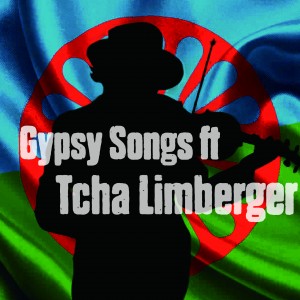
Gypsy Songs ft. Tcha Limberger
A collection of Gypsy songs featuring Tcha Limberger on guitar/violin/viola/bass. Read full description…
A collection of Gypsy songs featuring Tcha Limberger on guitar/violin/viola/bass.
Please note the special pricing system. For more information, please consult the FAQ for more information. All updates are free of charge once you purchase, even at the discounted price! Please also consult the notice above, for info on updates, if any.
Contains:
HD video performances of Tcha Limberger.
Backing tracks of each song with possibilities for muted bass/violin/rhythm guitar.
Lessons on each song regarding interpretation and choice of voicings for guitarists.
Lead sheets included: melody and harmony.
PDF of common chord progressions with special bass lines in TAB and standard notation.
mp3 recordings of each song.
If you are still not sure about the description, please check our Youtube channel www.youtube.com/dcmusicschool where we post many clips of each of our products. Furthermore, feel free to contact us for additional information. Please note our refund policy in our FAQ page.
Songs:
Andro Lake Kale Bala
Bear Dance 1
Bear Dance 2
Instrumental Piece in the Style of the Piottos
Hungarian Csardas - Szep Asszonynak Kurizalok
Hungarian Gypsy Song
Manouche Worship Song
Roma Worship Song
Romanian Hora
Russian Gypsy Song
Sirba Pompierilor
Recommended prerequesites:
For intermediate / advanced musicians.
Knowledge of basic harmony strongly recommended for accompanists.
These songs are mainly for violinists but do feature guitar lesson portions.
Backing tracks are for: bass players, violinists, and guitarists (or all instruments)
About Gypsy Songs:
This is a rare collection of pieces from various European countries often played by Gypsies. Technically speaking, there is no original Gypsy music; rather, throughout the centuries, Gypsies learned to perform the popular folk music of their host countries. In time, they have composed pieces as well but often within the context of a style they learned to play. The Gypsy style, therefore, varies from country to country, region to region, or even tribe to tribe. On the same piece, different ornaments, techniques, harmonies, and phrases are used depending on the region. The pieces presented in this lesson come from various regions, but are mainly performed in the Manouche Gypsy style, heavily influenced by pioneers of the style such as Schnuckenack Reinhardt, Titi Winterstein, Piotto Limberger, etc. Tcha Limberger is born into a Manouche family; however, he has traveled to various European countries to learn the Gypsy styles of various regions. As such, the influences of various styles have made their way into Tcha's interpretation of these pieces. This is a great and very rare opportunity for musicians to learn authentic Gypsy music!
Important note regarding the titles of the songs: as is common among Gypsy musicians, the song titles and sometimes the origins of the songs are often forgotten. Many Gypsies learn songs by ear and memory, and as the songs are passed down from musician to musician and generation to generation, the songs may sometimes even evolve into something different than the original piece. The songs in this collection are, therefore, songs as remembered by Tcha Limberger.
About Tcha Limberger:
Tcha Limberger was born in a ‘Manouche’ family with a long-standing musical tradition (his grandfather was the legendary Piotto Limberger). Both his father Vivi, singer and guitar player, and his Flemish mother raised him to understand and appreciate their respective cultures. As a child, Tcha was determined to become a flamenco singer. At age twelve, he started playing the clarinet, joining the family orchestra ‘The Piotto’s’. Meanwhile, he studied the flamenco guitar, but because of a lack of good teachers, he switched to Django-style guitar playing, learning from masters such as Fapy Lafertin and Koen De Cauter. At that time, he worked with ‘Het Muziek Lod’, where he met Dick Vanderharst, who introduced him to contemporary classical music and modern jazz. Tcha’s good friend and colleague, Herman Schamp, exposed him even more deeply to classical music and composing. When Tcha was seventeen, he started studying the violin, inspired by stories on his grand-father and recordings of Toki Horvath. By the time he was twenty-one, he left Belgium for Budapest, where he took classical and tzigane classes from Horvath Bela.
IMPORTANT: Please note that these are streamed videos. Downloads, if any, will be found under the DOWNLOADS section. When access is purchased, you will have permanent access to this lesson, and all updates/corrections (if any) will be free of charge!
73 minutes across 36 parts
| Performance: Andro Lake Kale Bala |
| Performance: Bear Dance 1 |
| Performance: Bear Dance 2 |
| Performance: Piottos Style |
| Performance: Russian Gypsy |
| Performance: Hungarian Gypsy |
| Performance: Hungarian Csardas |
| Performance: Manouche Worship |
| Performance: Romanian Hora |
| Performance: Sirba |
| Performance: Roma Worship |
| Introduction |
| Melody - Bear Dance 1 |
| Melody - Bear Dance 2 |
| Melody - Piottos Style |
| Melody - Roma Worship |
| Melody - Hungarian Csardas |
| Melody - Romanian Hora |
| Melody - Manouche Worship |
| Melody - Andro Lake Kale Bala |
| Melody - Russian Gypsy |
| Melody - Hungarian Gypsy |
| Melody - Sirba |
| Guitar Accompaniment |
| Chords - Bear Dance 1 |
| Chords - Bear Dance 2 |
| Chords - Piottos Style |
| Chords - Roma Worship |
| Chords - Hungarian Csardas |
| Chords - Romanian Hora |
| Chords - Manouche Worship |
| Chords - Andro Lake Kale Bala |
| Chords - Russian Gypsy |
| Chords - Hungarian Gypsy |
| Chords - Sirba |
| Final Thoughts |
When you buy
When you buy this, you’ll get instant access to everything. Our videos will play directly in your web browser — there is nothing to download or install. It works on tablets and smartphones, too.
Note that videos cannot be downloaded.
Questions? Contact us any time.
